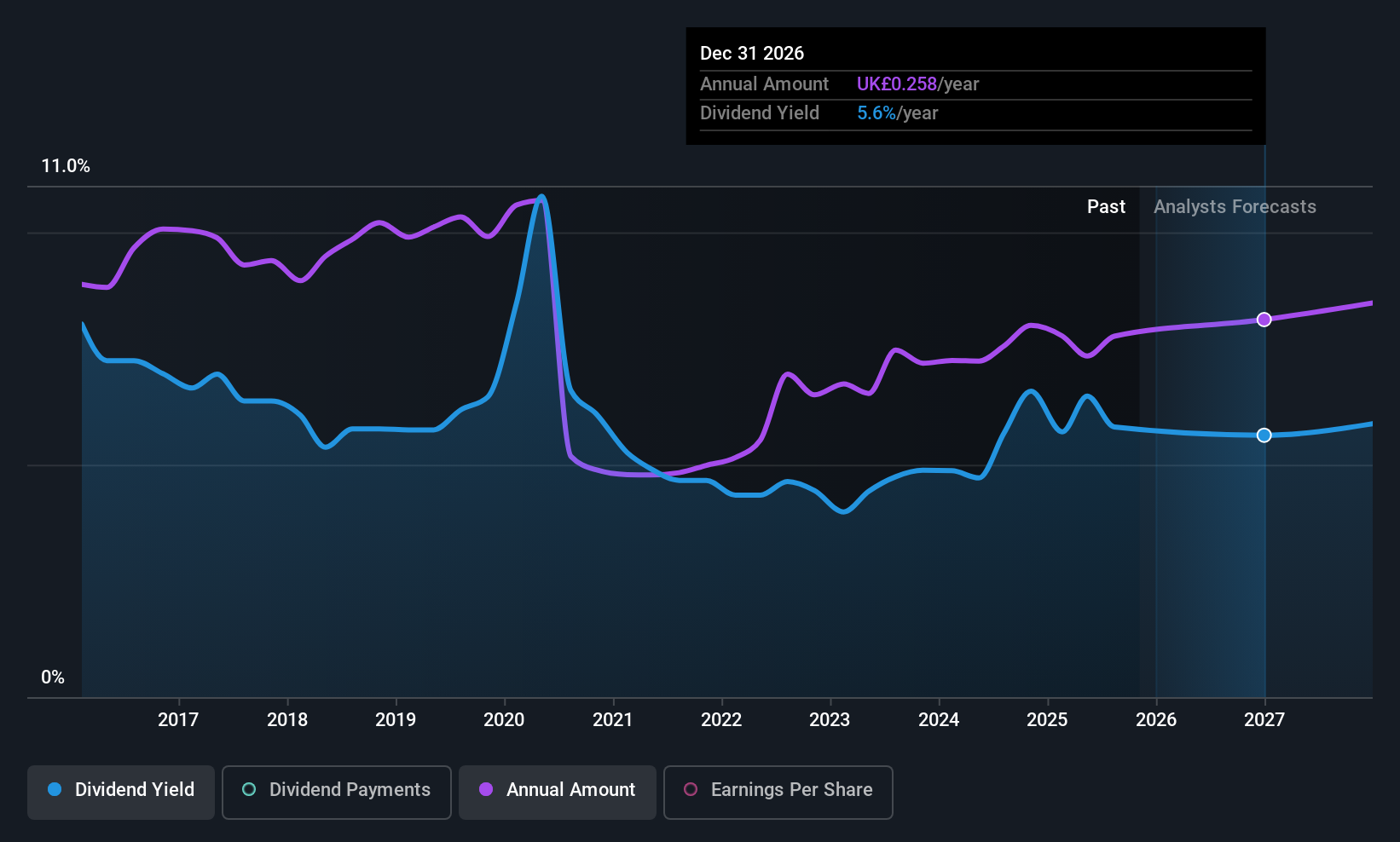- United Kingdom
- /
- Oil and Gas
- /
- LSE:BP.
Don't Buy BP p.l.c. (LON:BP.) For Its Next Dividend Without Doing These Checks
BP p.l.c. (LON:BP.) stock is about to trade ex-dividend in 4 days. Typically, the ex-dividend date is two business days before the record date, which is the date on which a company determines the shareholders eligible to receive a dividend. It is important to be aware of the ex-dividend date because any trade on the stock needs to have been settled on or before the record date. Accordingly, BP investors that purchase the stock on or after the 13th of November will not receive the dividend, which will be paid on the 19th of December.
The company's next dividend payment will be US$0.0832 per share. Last year, in total, the company distributed US$0.33 to shareholders. Based on the last year's worth of payments, BP has a trailing yield of 5.5% on the current stock price of UK£4.587. Dividends are a major contributor to investment returns for long term holders, but only if the dividend continues to be paid. We need to see whether the dividend is covered by earnings and if it's growing.
If a company pays out more in dividends than it earned, then the dividend might become unsustainable - hardly an ideal situation. An unusually high payout ratio of 338% of its profit suggests something is happening other than the usual distribution of profits to shareholders. Yet cash flow is typically more important than profit for assessing dividend sustainability, so we should always check if the company generated enough cash to afford its dividend. It distributed 47% of its free cash flow as dividends, a comfortable payout level for most companies.
It's good to see that while BP's dividends were not covered by profits, at least they are affordable from a cash perspective. Still, if the company repeatedly paid a dividend greater than its profits, we'd be concerned. Very few companies are able to sustainably pay dividends larger than their reported earnings.
See our latest analysis for BP
Click here to see the company's payout ratio, plus analyst estimates of its future dividends.

Have Earnings And Dividends Been Growing?
Companies with falling earnings are riskier for dividend shareholders. If earnings fall far enough, the company could be forced to cut its dividend. BP's earnings per share have fallen at approximately 13% a year over the previous five years. Such a sharp decline casts doubt on the future sustainability of the dividend.
Many investors will assess a company's dividend performance by evaluating how much the dividend payments have changed over time. BP has seen its dividend decline 1.8% per annum on average over the past 10 years, which is not great to see.
To Sum It Up
Should investors buy BP for the upcoming dividend? It's not a great combination to see a company with earnings in decline and paying out 338% of its profits, which could imply the dividend may be at risk of being cut in the future. Yet cashflow was much stronger, which makes us wonder if there are some large timing issues in BP's cash flows, or perhaps the company has written down some assets aggressively, reducing its income. Overall it doesn't look like the most suitable dividend stock for a long-term buy and hold investor.
Having said that, if you're looking at this stock without much concern for the dividend, you should still be familiar of the risks involved with BP. In terms of investment risks, we've identified 3 warning signs with BP and understanding them should be part of your investment process.
A common investing mistake is buying the first interesting stock you see. Here you can find a full list of high-yield dividend stocks.
Valuation is complex, but we're here to simplify it.
Discover if BP might be undervalued or overvalued with our detailed analysis, featuring fair value estimates, potential risks, dividends, insider trades, and its financial condition.
Access Free AnalysisHave feedback on this article? Concerned about the content? Get in touch with us directly. Alternatively, email editorial-team (at) simplywallst.com.
This article by Simply Wall St is general in nature. We provide commentary based on historical data and analyst forecasts only using an unbiased methodology and our articles are not intended to be financial advice. It does not constitute a recommendation to buy or sell any stock, and does not take account of your objectives, or your financial situation. We aim to bring you long-term focused analysis driven by fundamental data. Note that our analysis may not factor in the latest price-sensitive company announcements or qualitative material. Simply Wall St has no position in any stocks mentioned.
About LSE:BP.
Excellent balance sheet with moderate growth potential.
Similar Companies
Market Insights
Community Narratives



